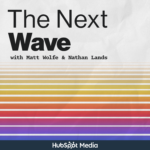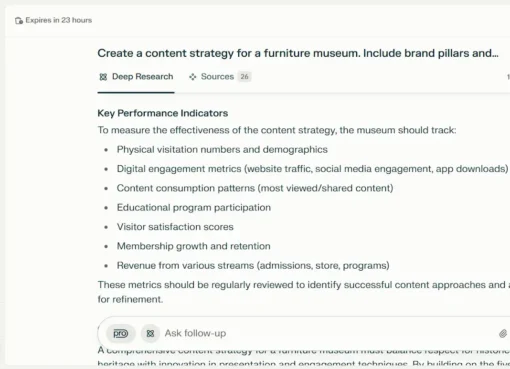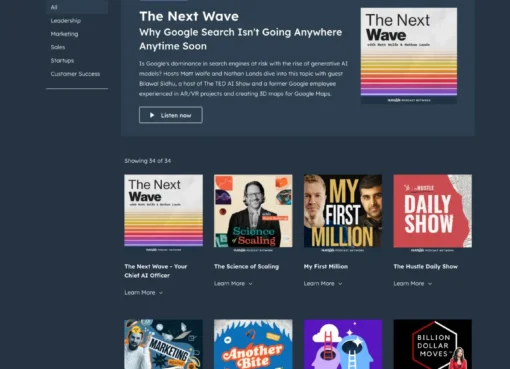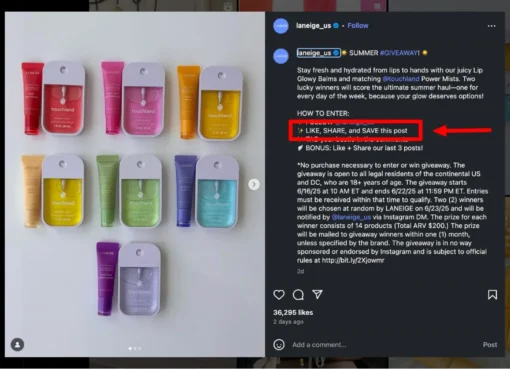If there’s one thing I’ve learned in years as a marketer, it’s that understanding the key distinctions of content marketing versus inbound marketing can transform how you attract and convert customers.
![Download Now: Free State of Marketing Report [Updated for 2025]](https://no-cache.hubspot.com/cta/default/53/db725f24-564c-483b-a28c-2d6ff9986516.png)
The two strategies are like the Baldwin brothers — closely related but dramatically different, so employing the wrong one could mean the difference between a blockbuster and a bust. (I mean, imagine Alec in Biodome; it just wouldn’t work.)
Today, content marketing and inbound marketing actually work together, with content serving as the fuel that powers your inbound engine. But knowing exactly how they compare and work with AI will help you build a more effective marketing strategy. Let’s unpack all the details.
Table of Contents
- Summary
- What is content marketing?
- What is inbound marketing?
- Content Marketing vs Inbound Marketing: The Key Differences
- Why Both Matter More Than Ever Right Now
- How to Integrate Content into Inbound Marketing
- FAQs about Content Marketing vs Inbound Marketing
Summary
TLDR: Content marketing is a core part of inbound marketing, but not all inbound marketing is content.
Content marketing focuses on creating a variety of valuable, relevant content (e.g., blog articles, guides, videos) to attract and engage potential buyers. Inbound marketing is a broader methodology that uses content, SEO, email, social media, lead nurturing, and automation to attract, convert, and delight customers throughout their journey.
The strategies work best together. Content drives awareness, while inbound turns that attention into leads and customers. For the best results, use content marketing as the catalyst for your inbound strategy, supported by the right tools and data. HubSpot has all of the tools you need to implement the two strategies, and you can get started for free.
What is content marketing?
When I tell people I work in content marketing, they assume I’m making videos on TikTok or posting on Instagram all day, but that’s a bit misguided. Yes, content marketing can include social media, but that’s not all it is.
Content marketing is when a business or brand creates, packages, and distributes valuable information to attract and engage their target audience — ultimately leading to a purchase.
Instead of directly pitching products, it provides genuinely useful information that solves their audience’s problems, answers their questions, or even just brightens their day. It can be written, visual, auditory, or interactive.
The catch? Regardless of medium, your content must deliver value, whether or not someone ever becomes a customer. It’s about building trust and authority first, sales second.
For example, a project management software company might publish guides on remote team collaboration, not just features of their tool. At the same time, a meal delivery service like Hello Fresh may share recipes and healthy eating tips.

Source
In both instances, the companies solve their audience’s challenges and demonstrate expertise, but don’t go for the hard sell of their product.
Types of content marketing can include:
- Blog posts (like the one you’re reading right now)
- Videos (like those on the HubSpot Marketing YouTube Channel, seen below)
- Podcasts (i.e. HubSpot’s Marketing Against the Grain)
- Infographics (like those shared here from Buffer)
- Guides or eBooks (like these in the HubSpot Resource Library)
- Tools (like our AEO grader)
- Templates (like these)

Source
Benefits of Content Marketing
Content marketing isn’t just more fun for your audience; it also has a number of benefits for your business.
1. Lower Cost
By taking advantage of public platforms like blogs and social media, most content marketing is low- or no-cost to get started with. On top of lower upfront costs, content marketing tends to generate compounding returns, so it’s especially attractive to businesses with a tighter budget.
Read: How to Manage Your Entire Marketing Budget [Free Budget Planner Templates]
2. Helps with Online Visibility
Producing consistent content (especially blog posts, articles, etc.) creates more pages for your brand and website to get found through search engines and even AI agents like ChatGPT or Gemini. They also create more opportunities to get shared.
Pro tip: Our free AEO Grader can help you find these opps.
3. Increased Brand Awareness and Trust
Greater visibility comes with greater brand awareness, which is the first step in getting someone to buy from you. Even more importantly, however, sharing helpful, informative content helps companies build credibility and trust with their audience as an expert.
Read: How to Build a Brand Awareness Strategy (and Why It Matters)
4. High Return on Investment (ROI)
With its low costs and longer-term impact, content marketing delivers a strong return on investment. In fact, according to Neal Schaffer, content marketing is 62% less expensive than traditional marketing, yet generates three times as many leads.
What is inbound marketing?
I know you’re probably thinking, “Content sounds a lot like inbound marketing, Ramona.” And you’re right. But content marketing is just one piece of the inbound puzzle.
Inbound marketing is a comprehensive methodology that attracts customers through relevant, helpful content and experiences tailored to them.
While old-school marketing tactics (like billboards) interrupt audiences, inbound marketing aims to deliver the information people need when they are actively seeking it.
Inbound marketing includes:
- Content creation (surprise!)
- SEO and technical optimization
- Social media engagement
- Email nurturing campaigns
- Conversion rate optimization
- Lead nurturing
- Marketing automation
- PPC/paid ads
It’s a full-funnel approach: attract strangers, convert visitors to leads, close leads into customers, and delight customers into promoters. Content marketing brilliantly handles the “attract” phase, no doubt, but inbound marketing orchestrates the entire journey.

Source
Benefits of Inbound Marketing
In addition to the low cost and high ROI benefits of content marketing, inbound marketing offers a few unique big-picture benefits.
1. Full-Customer-Journey Engagement
Inbound marketing doesn’t stop at just awareness; it outlines a path from attraction to engagement (conversion and purchase) to delight. In other words, its goal is to engage customers at every stage of their journey and actually close a purchase.
It can accomplish this using lead capture and conversion rate optimization, lead nurturing, automation, chatbots, sales enablement, and more.
2. Personalized and Multi-Channel Touchpoints
Part of the fun of incorporating so many different tactics in inbound is that each buyer’s journey can be distinct. With such a variety of channels and touchpoints, buyers can feel like their experience is catered specifically to them.
One person may find you through a blog article, peruse your website, and then decide to buy in a few hours. Another may see a paid ad, ignore it, but then follow you on social media and make a purchase a year later.
Plus, thanks to automation and AI, you can use behaviors, segmentation, etc., to serve prospects different messages, calls-to-action, or even website pages. Every journey is a snowflake.
3. Better Lead Quality and Conversion
Because inbound focuses on pulling in people who are already interested, the leads tend to be more qualified. This increases conversion rates compared to more generalized content distribution.
4. Increased Customer Retention & Loyalty
Inbound marketing emphasizes “delighting” customers after converting through thoughtful onboarding, support content, and personalized communication.
These efforts help new customers start on the right foot, which can improve their overall experience and customer lifetime value, drive referrals, and reduce churn. While content marketing mostly focuses on building trust and awareness, inbound marketing tries to build ongoing loyalty.
5. More Measurement, Optimization, & Alignment Across Teams
Inbound tends to involve more digital tools and infrastructure: marketing automation, lead scoring, CRM integration, email workflows, landing pages, etc.
This means marketers have more opportunities to measure which touchpoints are working, optimize the funnel, and align with sales more tightly.
Content Marketing vs Inbound Marketing: The Key Differences
So what are the actual differences between content marketing and inbound marketing?
In short, content marketing is a tactic, while inbound is a holistic methodology. Content marketing tends to be more awareness-focused, while inbound tackles the whole customer journey through conversion, purchase, and delight.
Truth is, you can do content marketing without a full inbound strategy (like publishing a blog without lead capture forms). But you can‘t do inbound marketing without content. It’s the fuel that attracts people in the first place.
How does loop marketing fit into this equation?
Loop marketing is an evolution of inbound marketing. Like inbound, Loop marketing employs multiple channels and moves through the full buyer’s journey, but it now takes into account the impact of AI in the modern ecosystem and how its fast pace requires constant optimization.
If you’re just getting started with your marketing strategy (i.e, creating customer personas, your content strategy, etc.), begin with inbound marketing principles. If you have all this and ready to level-up your results with AI-powered personalization, cross-channel amplification, and rapid optimization, loop in Loop Marketing.
Get 100+ FREE expert AI prompts for each stage of the Loop Marketing playbook.
Which approach delivers better ROI for my business?
Like all great marketing questions, the answer to this one is “it depends.” Which approach delivers better ROI really depends on your business’s goals and how you specifically use content or inbound.
For example, if you’re simply using content to build a following on social media, perhaps content alone will give you the return you’re looking for. However, if you’re trying to convert leads and make sales, you likely see more return from your inbound efforts.
Why Both Matter More Than Ever Right Now
Marketing has massively shifted since the early days of content marketing and inbound marketing.
Personally, I’d go as far as to say the modifiers of “content” and “inbound” are obsolete, as their tactics have just become general marketing best practice — but the shift is not purely by name.
With AI-generated content, summaries, and zero-click searches, and algorithm-controlled reach, the old “build it and they will come” approaches aren’t as effective as they used to be.
Today, Google might summarize your content without sending traffic to your website. Social platforms can limit organic reach, especially if it includes a link, while technically “owning” your audience. And ChatGPT can answer questions using your expertise without attribution.
It’s easy for your content efforts and name to go unknown and unrewarded, but there is a possible solution. Savvy marketers aren’t choosing between content and inbound, but uniting them so:
- Content marketing builds authority and trust across multiple platforms
- Inbound marketing captures and nurtures the audience you do attract
- You own the relationship, not just rent attention
(Spoiler alert: The Loop Marketing playbook essentially does this for you.)
How to Integrate Content into Inbound Marketing
Ready to combine content marketing and inbound marketing? Here’s your action plan:
1. Create content that attracts your target audience.
Create content addressing your audience‘s biggest challenges. Use keyword research and customer interviews to identify topics that matter. Focus on problems your ideal customers face before they’re ready to buy.
In Loop Marketing, this is called the Express stage — you’re clarifying your ideal customer profile and crafting a style guide that aligns with their preferences. From there, you can share your style guide with AI to help you create content and personalize experiences.
2. Add inbound elements to engage and convert.
With your content created (perhaps with the aid of AI), add inbound elements to help you engage and ideally convert your audience.
This means:
- Creating premium content offers (templates, checklists)
- Including relevant calls-to-action
- Implementing live chat or chatbots
- Building landing pages for high-value offers
This is where the Tailor and Amplify stages of Loop Marketing come in. Here you’re crafting content and experiences that feel personal to each audience member with the help of data enrichment and segmentation and diversifying your channels.
3. Nurture contacts with personalized follow-up.
Engagement doesn’t end with the form fill. You need to use marketing automation to deliver related content based on your visitors’ personal needs and past behavior. This may include creating email sequences that provide additional value while building toward conversion or even setting up retargeting ads on social media.
4. Measure performance and iterate.
In this combined approach, you’ll then track not just content views, but how content contributes to lead generation and revenue. Use attribution modeling to understand which content pieces influence conversions over time.
All of this work proves ROI and guides future strategy (which is what Loop Marketing’s Evolve stage is all about).
1. Is content marketing the same as inbound marketing?
No, content marketing and inbound marketing are not the same thing. Rather, content marketing is a standalone tactic that lives under the umbrella of inbound marketing.
To get more granular, content marketing focuses specifically on creating and distributing valuable content. In contrast, inbound marketing is a comprehensive methodology that includes content creation plus lead capture, nurturing, and conversion optimization.
2. Which is better: content marketing or inbound marketing?
Neither — Just like Alec or Stephen.
Content marketing and inbound marketing work best together. Content marketing attracts your audience, while inbound marketing converts that attention into business results. You need both for maximum effectiveness.
3. Can you do inbound marketing without content marketing?
Technically, yes, but it’s not recommended. You can use forms to gather information from your target audience and email marketing to communicate with them, but what’s in it for them?
Content marketing is the primary way to appeal to strangers and turn them into visitors. Without compelling content, your inbound strategy has nothing of value to fuel the “attract” phase of the methodology.
4. How much should I budget for content marketing vs inbound marketing?
Think of it as one integrated budget rather than separate line items.
You can get started with content marketing and inbound marketing for free with tools like HubSpot. As you scale, however, content creation typically requires 30-40% of your marketing budget (including tools, talent, and promotion), while the remaining budget supports lead capture systems, automation tools, and conversion optimization.
5. What tools do I need for content marketing and inbound marketing?
For content marketing: Content management systems, design tools, analytics platforms, social media scheduling tools, and perhaps an AI assistant like Breeze. For inbound marketing: CRM systems, marketing automation platforms, landing page builders, and email marketing tools.
Many platforms, like HubSpot, offer all of these capabilities.
6. Are there examples of companies using both strategies successfully?
Absolutely! Many successful companies integrate both content marketing and inbound marketing to create comprehensive digital strategies. For example:
Clearwing Productions, a live event production company, used HubSpot’s Marketing Hub to create content and follow up with leads, ultimately driving $8M in Revenue and 4,200% ROI.
To meet the needs of both students and parents, Morehouse College built a new admissions blog on Content Hub — powered by Mr. Tiger, a custom assistant created in Breeze Studio — increasing on-site time by 27% and saving approximately $8,000 in agency contract hours.
Combine to conquer.
Today, content marketing and inbound marketing aren’t rivaling siblings competing for the lead — they’re the team behind a blockbuster.
Content may be the lead actor — the one everyone comes to see, delivering the memorable lines and building trust with the audience — but inbound is the director, producer, and crew behind the scenes, making sure the movie actually sells.
In 2025, you can’t just cast a star (a la create content) and hope people show up.
AI, shifting algorithms, and shrinking organic reach mean your strategy has to be tighter, brighter, and more deliberate. That’s where inbound shines — and Loop Marketing keeps the whole franchise evolving.
So, don’t frame it as “content versus inbound.” It’s “content and inbound” — a duo that’s most successful together.
Editor’s note: This post was originally published in September 2014 and has been updated for comprehensiveness.





![What Businesses Get Wrong About Content Marketing in 2024 [Expert Tips] what-businesses-get-wrong-about-content-marketing-in-2024-[expert-tips]](https://blog.contentkrush.com/wp-content/uploads/2024/03/130890-what-businesses-get-wrong-about-content-marketing-in-2024-expert-tips-510x369.png)



















Comment here